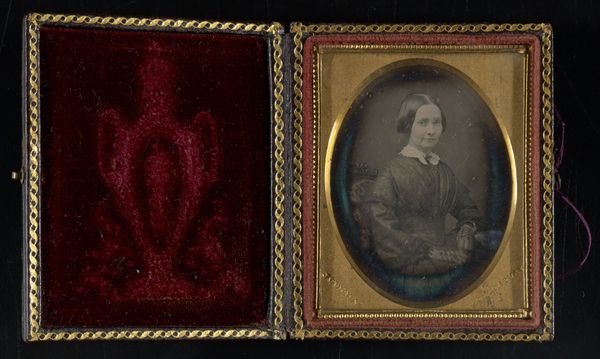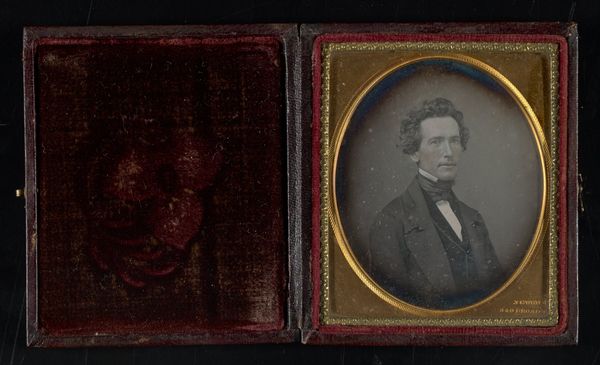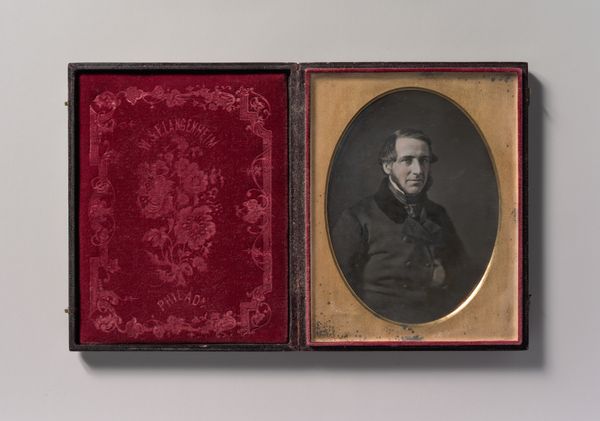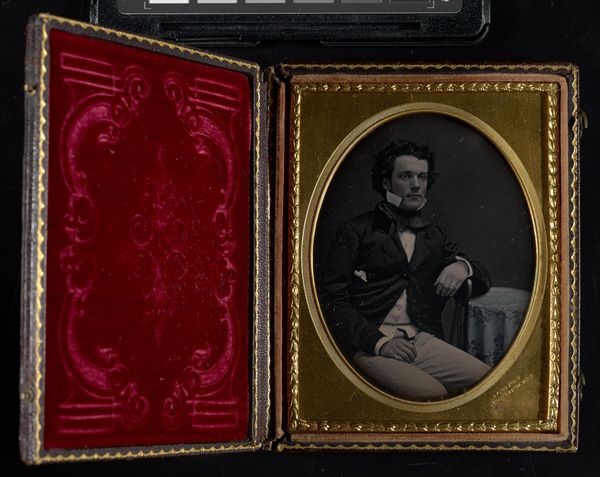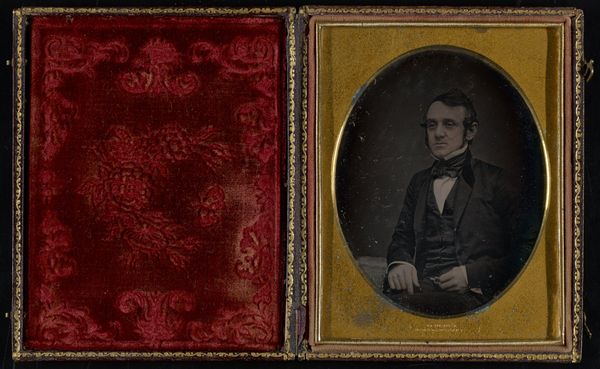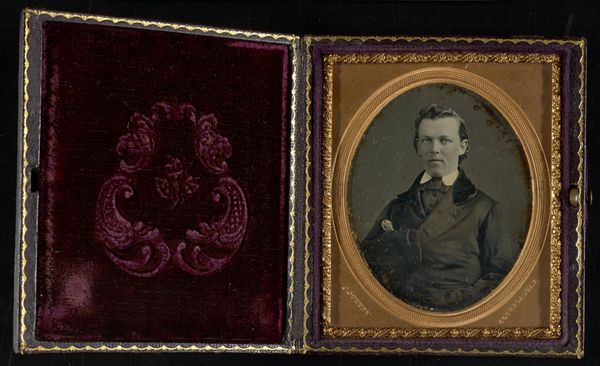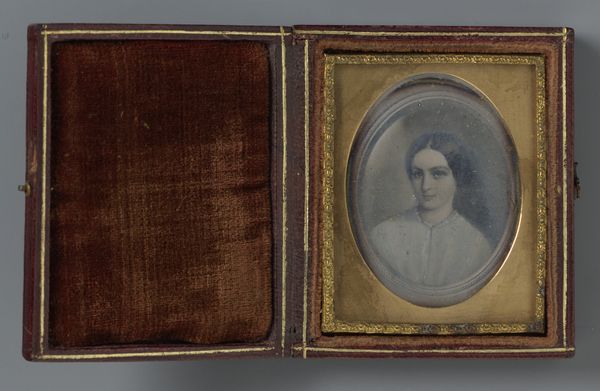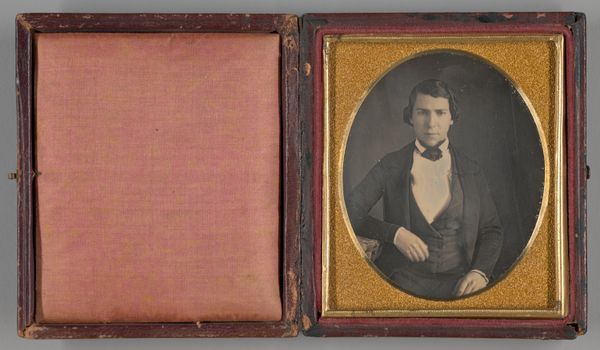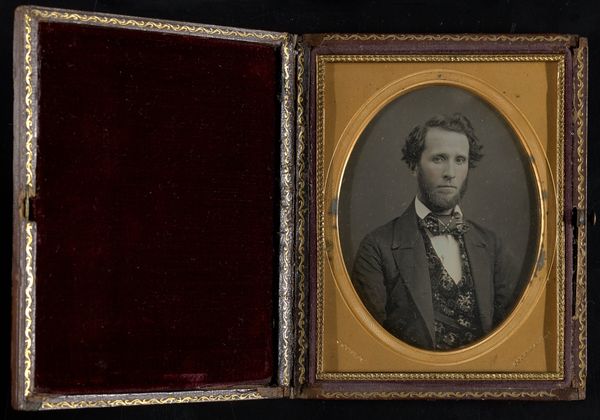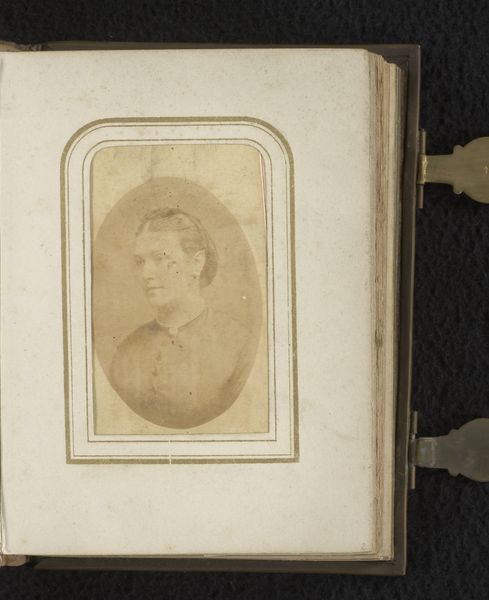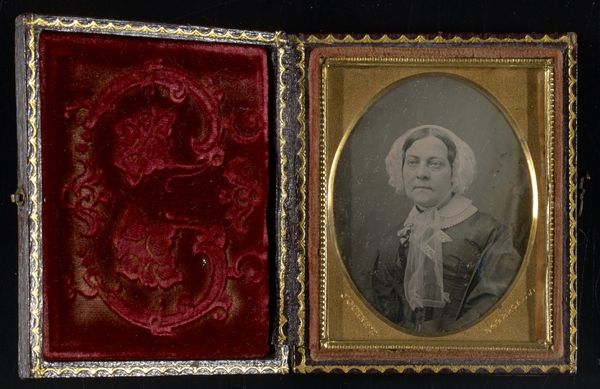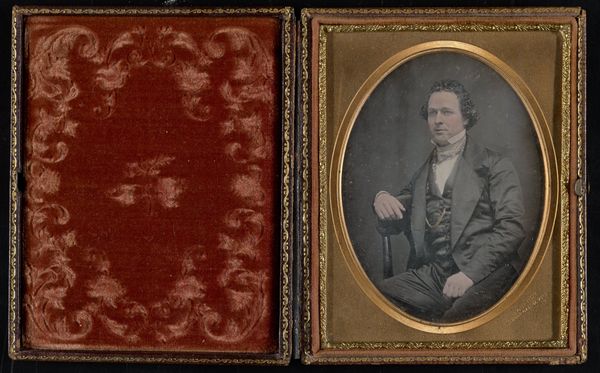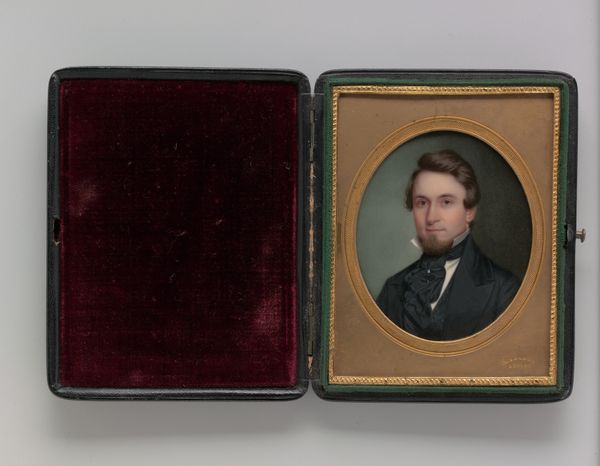![Untitled [portrait of a young man] by Jeremiah Gurney](/_next/image?url=https%3A%2F%2Fd2w8kbdekdi1gv.cloudfront.net%2FeyJidWNrZXQiOiAiYXJ0ZXJhLWltYWdlcy1idWNrZXQiLCAia2V5IjogImFydHdvcmtzLzUzMTYzYTU0LThjMjYtNDYxYi04MjdmLTczM2ZkM2EzODBkNi81MzE2M2E1NC04YzI2LTQ2MWItODI3Zi03MzNmZDNhMzgwZDZfZnVsbC5qcGciLCAiZWRpdHMiOiB7InJlc2l6ZSI6IHsid2lkdGgiOiAxOTIwLCAiaGVpZ2h0IjogMTkyMCwgImZpdCI6ICJpbnNpZGUifX19&w=3840&q=75)
Dimensions: 3 1/4 x 2 3/4 in. (8.26 x 6.99 cm) (image)3 7/8 x 3 7/16 x 7/8 in. (9.84 x 8.73 x 2.22 cm) (mount)
Copyright: Public Domain
Editor: Here we have an "Untitled [portrait of a young man]" by Jeremiah Gurney, a daguerreotype made sometime between 1852 and 1858. It’s such an intimate little object. What really strikes me is the sitter’s expression— a mix of seriousness and a hint of vulnerability, I think. How do you interpret this work, particularly considering the time it was made? Curator: This daguerreotype captures a moment in time, yes, but it also embodies so much more. Think about the context: mid-19th century America, on the brink of immense social and political upheaval. Photography was still a relatively new technology, making portraiture more accessible to a wider range of people. What does it mean to have one's image captured during this period? How does this democratisation of image-making influence identity and representation? Editor: That's fascinating! So, you're saying that having access to photography changed the way people saw themselves? Curator: Absolutely. Consider how portraiture was previously reserved for the wealthy elite. With photography, the burgeoning middle class could also participate in shaping their own image and legacy. This portrait, therefore, becomes a statement of sorts, about belonging, about visibility, even about challenging the existing social order. Do you see any signs of that here? Editor: Well, his clothing seems quite proper, but the slightly dishevelled hair and his posture do appear to defy those old rigid poses… Curator: Precisely! These small details contribute to a narrative of subtle resistance, of carving out an individual identity within a society still grappling with rapid change and inequality. He may appear respectable, but the overall tone quietly breaks with convention, which mirrors a rising sentiment from the average American. Editor: This really shifts how I see the piece. I was focusing on the individual, but now I recognize that his portrait speaks to broader societal shifts! Curator: Exactly! It reminds us to view art not just as aesthetic objects but as powerful documents of history and social change, questioning and sometimes even upending social structures. Editor: This was very insightful! I will now look for signs of these subtle challenges. Curator: That’s the most exciting aspect of understanding art in its cultural and political context.
Comments
No comments
Be the first to comment and join the conversation on the ultimate creative platform.
